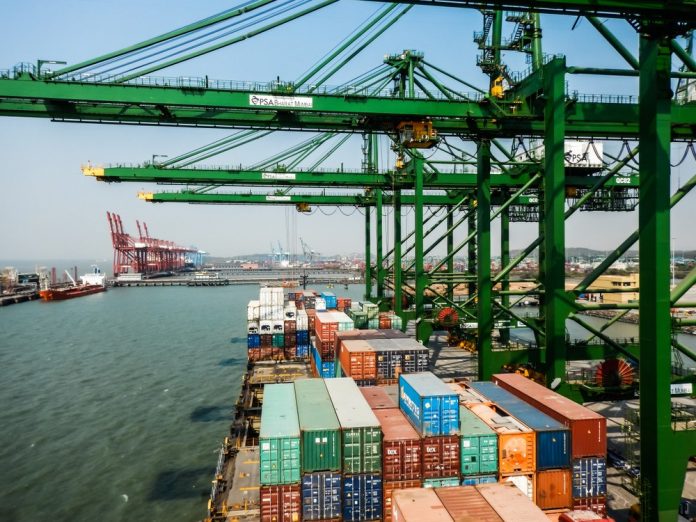
Nhava Sheva Port (JNPT), India’s busiest public container gateway, has announced it is in a position to handle double-stacked container freight trains out of its new integrated rail yard for all terminals in the harbour.
The port has five container terminals and mixed or combined train operations have been its mainstay for inland container depot (ICD) volumes.
The port authority noted that “the state-of-the-art integrated rail yard, designed to handle double-stacked container trains, is set to commence on the Dedicated Freight Corridor (DFC) rail lines for all the five terminals.”
The authority went on to say, “This advanced common rail yard will streamline operations and enhance efficiency at the port.”
The sophisticated integrated common rail yard has been developed in an effort to upgrade the port’s infrastructure for seamless freight movement as demand builds, propelled by the DFC connectivity.
According to a previous port statement, the long-haul common yard has three lines of 1,500 metres for double-stack container trains, out of which two are top-wired ballastless lines meant for loading and unloading of containers, and one is for engine turnaround of electric locomotives.
The Western DFC project, a high-stakes investment for India’s containerised trade, is a 1,504-kilometre broad-gauge freight only connector between Dadri, the busiest ICD in North India, and Nhava Sheva.
Along the DFC route, it is estimated that advanced wagons can carry freight up to 81 tons per wagon at a speed of 100 kilometres per hour, including for double-stacked container trains, compared with 60 kmph on the normal network.
Nhava Sheva Port has been working hard to convert more truckloads to the rail mode to alleviate road congestion and improve container dwell times.
The port saw 1.52 million TEUs during April-June, the first quarter of fiscal year 2023-24, up 3% year-over-year. Rail volumes accounted for 16.6% of total traffic, according to data obtained by Container News.
Container Corporation of India (Concor) and other private rail companies, including Gateway Distriparks (GDL), have already opened a flurry of new upgraded services on the DFC route.
Last month, GDL launched a double-stacked rail connection between ICD Viramgam and Mundra Port.
“This will help us with faster evacuation of containers and reduce dwell time at the port for our customers,” the company said.
GDL further explained, “In particular, as ICD Viramgam is a hub that we use for consolidating containers for double stack operations, we will greatly benefit from this development not only for the ICD Viramgam market but also our Northern India ICDs.”
The Viramgam-Mundra service followed GDL opening a train route between Faridabad ICD and Mundra.
Jenny Daniel
Global Correspondent
 Hotline: 0944 284 082
Hotline: 0944 284 082
 Email:
Email: 


 VN
VN